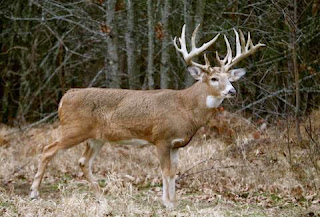The 7 Deadly Sins of Whitetail Hunting
1) Lack of Scouting
The number one cause for failure in whitetail hunting is the lack of scouting. The second greatest cause for failure in whitetail hunting is not knowing what to look for while scouting. Proper scouting is for more than just seeing big deer. We must learn to differentiate between deer sign left by does and deer sign left by bucks. Furthermore, we must be able to differentiate average buck sign from exceptional buck sign.
2) Lack of Scent Control
Too often hunters enter the field with little regard to their scent. Scent control requires more than simply wearing clean unscented clothing. We must be aware of wind direction at all times and how the morning and evening thermals drift our scent through the forest. Cover scents are nice, but seldom do they put venison in the freezer.
3) Lack of Awareness
We must stay focused on the task at hand. If we allow our thoughts to drift elsewhere, when the buck shows we won’t be ready. Hunting trophy deer often involves many hours of boredom. Keeping our minds in the now is crucially important. One way to help accomplish this is to focus on our breathing whenever we find our thoughts wandering away from the hunt.
4) Lack of Shooting Proficiency
Practice, practice, practice. We should be so familiar with our bow or rifle that shooting it and shooting it accurately is second nature to us. A hunter fiddling around with a weapon he is unfamiliar with has saved the lives of more big bucks than just about anything else.. Our focus needs to be on seeing dear. The shooting should be automatic.
5) Lack of Whitetail Knowledge
Deer are not people. We tend to attribute human characteristics to the deer. Unfortunately, deer view the world completely different than humans do. An understanding of how deer react to different stimulus is critical. We need to understand both a deer’s physical needs and which type of habitats deer prefer.
6) The Inability to Adapt to Changes in Deer Behavior
Nothing in nature is static. Everything is in constant flux. Weather and wind direction can change rapidly. A food source that was available weeks ago has now dried up. We must constantly evaluate changes in the environment which affect deer behavior and adjust our strategies and tactics to adapt to the current situation.
7) Lack of True Intent
Odds are you will only harvest a buck as big as what you are willing to settle for. Hunters with a good visual image of the buck they want generally harvest bigger bucks. Simply stated, everyone wants a big buck, but if you’re willing to settle for less that’s what you’ll get.
Good Luck and Good Hunting,
Jim
http://www.amazon.com/Buck-Naked-Straight-Trophy-Whitetails/dp/1466498234














